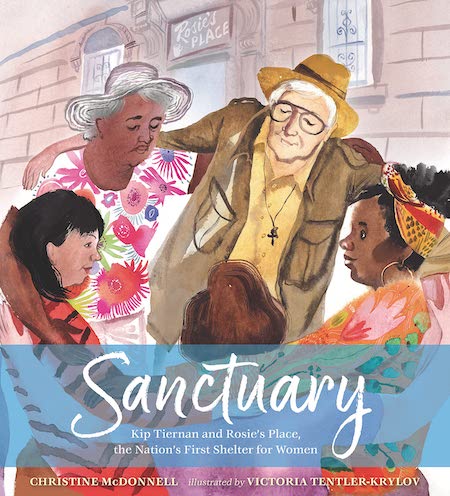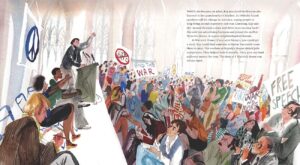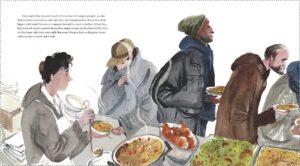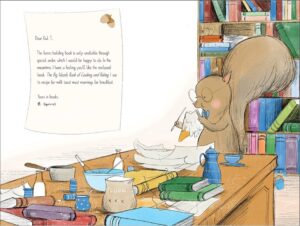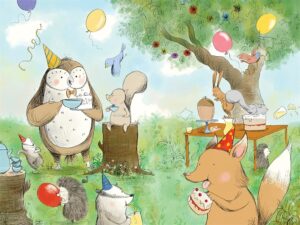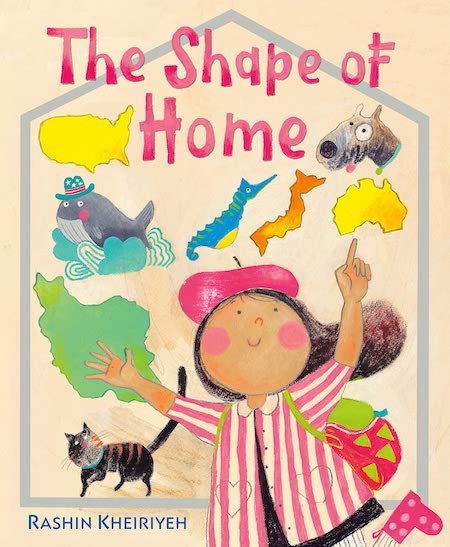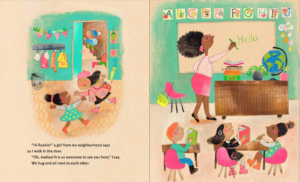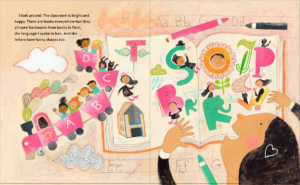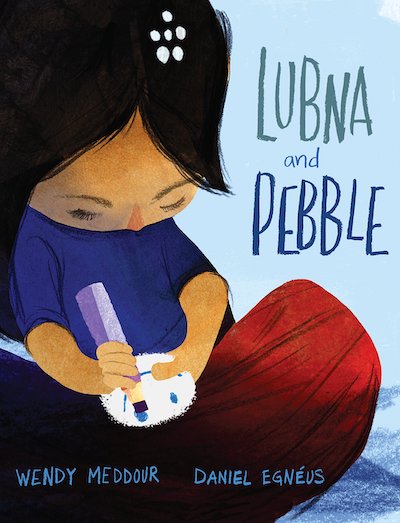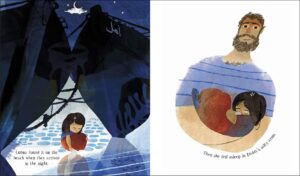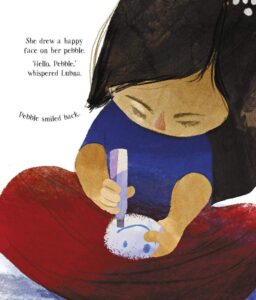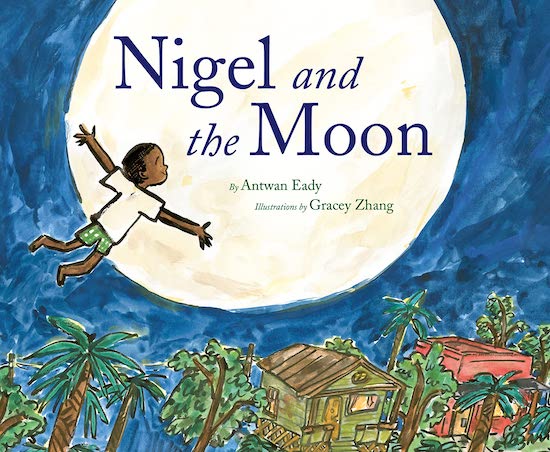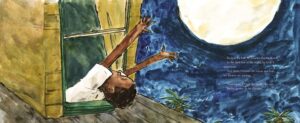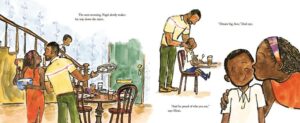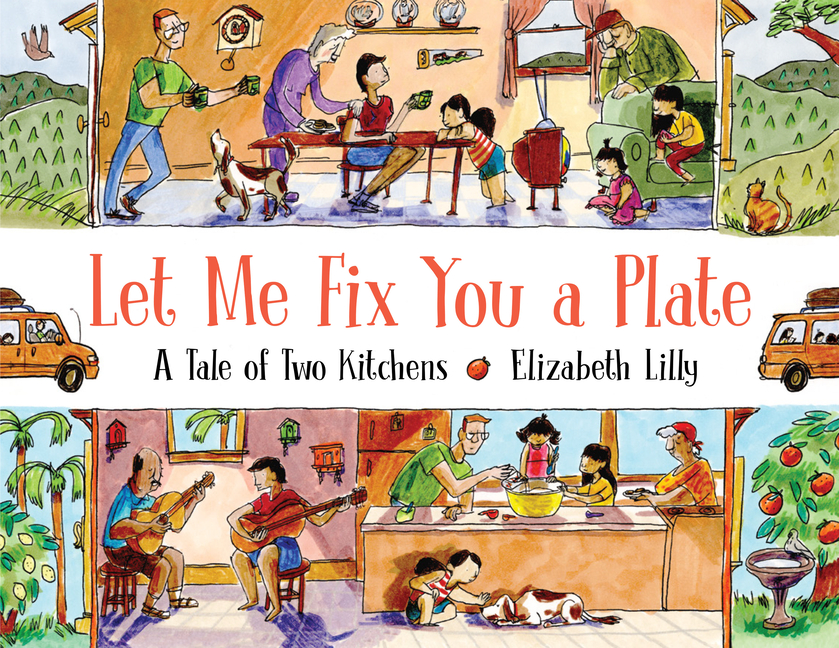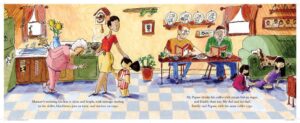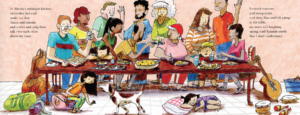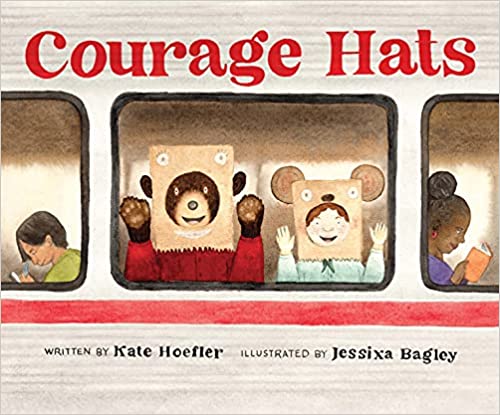
Chronicle Books | 978-1797202761
I have admired author Kate Hoefler‘s picture books for some time now. Her newest, COURAGE HATS, illustrated by Jessixa Bagley is a beautifully layered look at the ways in which expectations – our own and those of others – change when we’re willing to start small, take one step in a chosen direction, and leave room for surprises along the way.
The story begins when Mae has to take a trip on a train.
“For Mae, the train went deep into bear places.
A bear was big and ate small things.
And Mae was small.”
Bear was taking a trip, too.
“For Bear, the train went deep into people places.
A person was small and ate big things.
And Bear was big.”
They would both need to be brave. What could they do? Without courage in their hearts, they would need to find another way.
And so, each set themselves to the task.
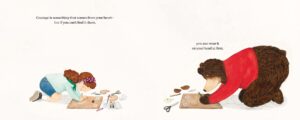
CLICK TO ENLARGE © illustrations by Jessixa Bagley
Maybe Mae’s hat would make a bear think she was just another bear. And Bear’s hat would make a person think he was another person.
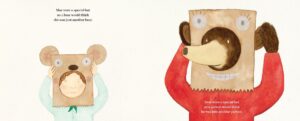
CLICK TO ENLARGE © illustrations by Jessixa Bagley
On board the train, Mae found a grown-up to sit with. And Bear found a small cub to sit beside.
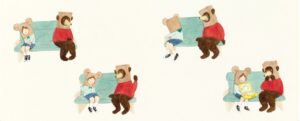
CLICK TO ENLARGE © illustrations by Jessixa Bagley
The ride on the train was long. “The train went places where it’s easy to get lost.” But the train was never lost and, as it weaved its way through bear places and people places, the two travelers became friends.
This beautiful book is more than a story about finding courage. It’s about new experiences, an unlikely friendship, and the power of stepping outside your comfort zone to explore both.
Enjoy these “behind-the-scenes” interviews and learn more about COURAGE HATS:
- Mr. Schu Reads – interview with the author & illustrator
- Max’s Boat – interview with the author








